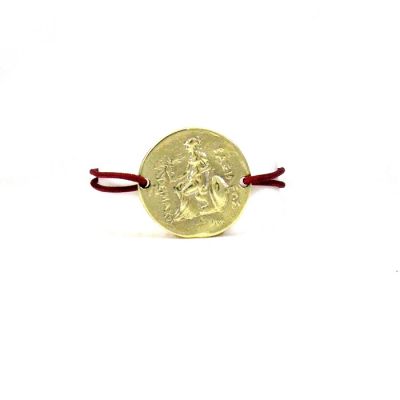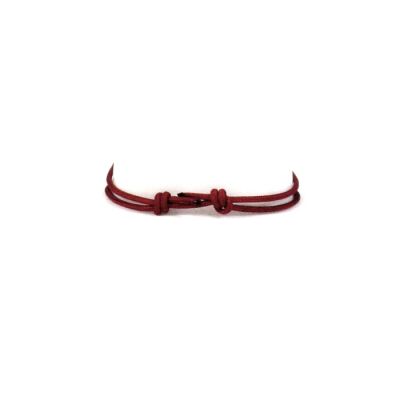Alexander the Great bracelet inspired by the silver tetradrachm coin of King Lysimachus of Thrace, which depicts on the one side the head of Alexander the Great and on the other side of the coin goddess Athena, holding victory in her hands. 297 - 281 B.C., Macedonia. The ancient Greek civilization, with its rich culture, history and art, is a great source of inspiration.
Diameter of the coin: 3 cm
Dimensions of bracelet: the cord is adjustable to fit all wrists with its special tying.
**The cord comes in three colours, black, burgundy red and blue. You can specify which one you wish, in the comments box when you place your order.
Take a look at the rest of the coins collection and the set of five silver-plated coins.
All prices include VAT.
On the silver tetradrachm coin of King Lysimachus of Thrace (297-281 BC), the head of Alexander the Great with the horns of Ammon Zeus is depicted on the obverse and goddess Athena, carrying goddess Nike (Victory) in her hands is depicted on the reverse. In the field of the reverse there are monograms and the inscription King Lysimachus, which is positioned to the right and the left side of goddess Athena.
Lysimachus did not seem to issue coins before the battle of Ipsus , except a series of tetrovola issued in Lysimachia. In 297 - 296 BC he began to cut coins, avoiding to put his portrait on the coins, but putting his name and his royal title.
After the death of Lysimachus in 281 BC, the coin continued to be issued by various mints and remained popular throughout the course of the 3rd century BC , whereas it was a coin politically neutral and acceptable throughout the Hellenistic world. The original coin is at the Numismatic Museum in Athens.
The first coins were made of electrum in Asia Minor, an alloy of gold and silver in the late 7th BC century. In the front side of the coin were shown the respective symbols of the cities, the deities who protected the cities, mythical persons or regional products of the cities, visualizations that made recognizable their origin.
The precious metal, which was mainly silver, set the value of the coin, the small shape made it easy to carry and the symbol of each issuing authority was the guarantee of weight and authenticity. At the end of the 5th century BC, copper coins were produced, in order to be used for the small daily transactions.
No posts found











